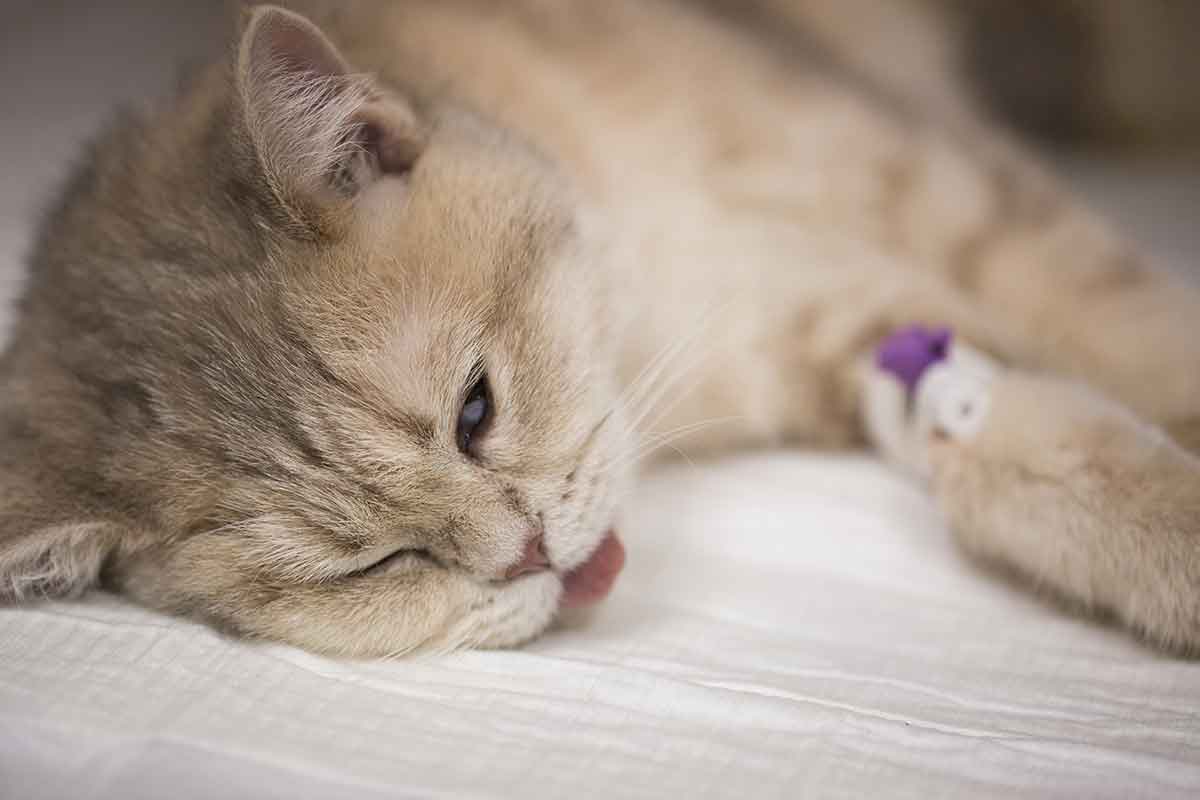Do you ever wonder what your cat is thinking when she just stares at you unblinkingly while the dog is maniacally bouncing up and down over a ridiculously small treat? In the ‘Ad-dressing of cats’, T.S. Eliot famously stated, ‘So first, your memory I’ll jog, And say: A CAT IS NOT A DOG’. The intriguing fact is that this difference is not only true for life, it is true for anesthesia too!
The most important difference between cats and dogs is the effect of the cat’s behavior on the dose of anesthetic drugs. Because cats are, as a general population, more nervous at the veterinary hospital than dogs, they are more likely to need calming medications, even for simple examinations that don’t require anesthesia.
The first step toward a tranquil visit and successful anesthetic procedure is to choose a clinic that is Fear Free certified and dedicated to quiet, gentle handling of your cat. Your veterinarian may prescribe a stress-reducing medication for you to give your cat at home on the morning of the veterinary visit, but even with pharmaceutical help, cats can still be nervous at the vet clinic. To provide your cat the best chance for a peaceful visit, you might look for a cat-only hospital or a hospital with special areas designed just for cats. Cats are decidedly less stressed if they don’t have to be in the same room with those noisy barking dogs!
That’s important because keeping the cat calm throughout the whole day — from leaving home to returning home — makes anesthesia safer. The dose of anesthetic drugs needed to anesthetize calm cats is lower, and safer, than the dose required for extremely nervous cats.
Other feline-specific considerations come into play when cats must be anesthetized for a procedure. For instance, because of their small body size, cats often need special breathing systems during anesthesia and physiologic monitors that work better in very small patients.
Although the same anesthetic drugs are used in dogs and cats, cat-specific dosages are often slightly different from dosages used in dogs. Cats are prone to getting very cold, and this can be uncomfortable when waking up from anesthesia. Profoundly low body temperatures can also be dangerous. Veterinary nurses carefully monitor your special kitty’s vital signs and ensure she stays warm throughout the entire anesthesia procedure.
Afterward, expect to provide your cat with analgesic medications if she was anesthetized for a painful procedure. Your cat may not seem to be in pain after a procedure, but cats are often better than dogs at hiding pain. They often retreat under the bed or to the darkest closet so we don’t see that something might be wrong.
Alternatively, cats may misbehave and even scratch or bite if they are in pain. This may lead us to believe that we have a “bad cat” when in actuality that cat just needs some help to control pain. Cats and dogs have a pain system that is similar to that of humans, so if something is painful to us, it is painful to a cat.
If analgesic drugs are not offered, be your cat’s advocate and ask about pain medication! Cats can be a bit difficult to treat, so ask about long-lasting medications that allow infrequent administration and drugs that can be administered under the skin or as an oral liquid, which many cats like better than pills.
Cats are definitely not dogs, but one of the best parts of being a veterinarian is that we get to treat more than one species. So don’t be afraid to take your cat to the veterinarian, but don’t expect your cat to respond to the veterinary visit, to anesthesia, or to pain the same way your dog would respond. Cats are indeed special and deserve special treatment–in life and in anesthesia!
This article was reviewed/edited by board-certified veterinary behaviorist Dr. Kenneth Martin and/or veterinary technician specialist in behavior Debbie Martin, LVT.








